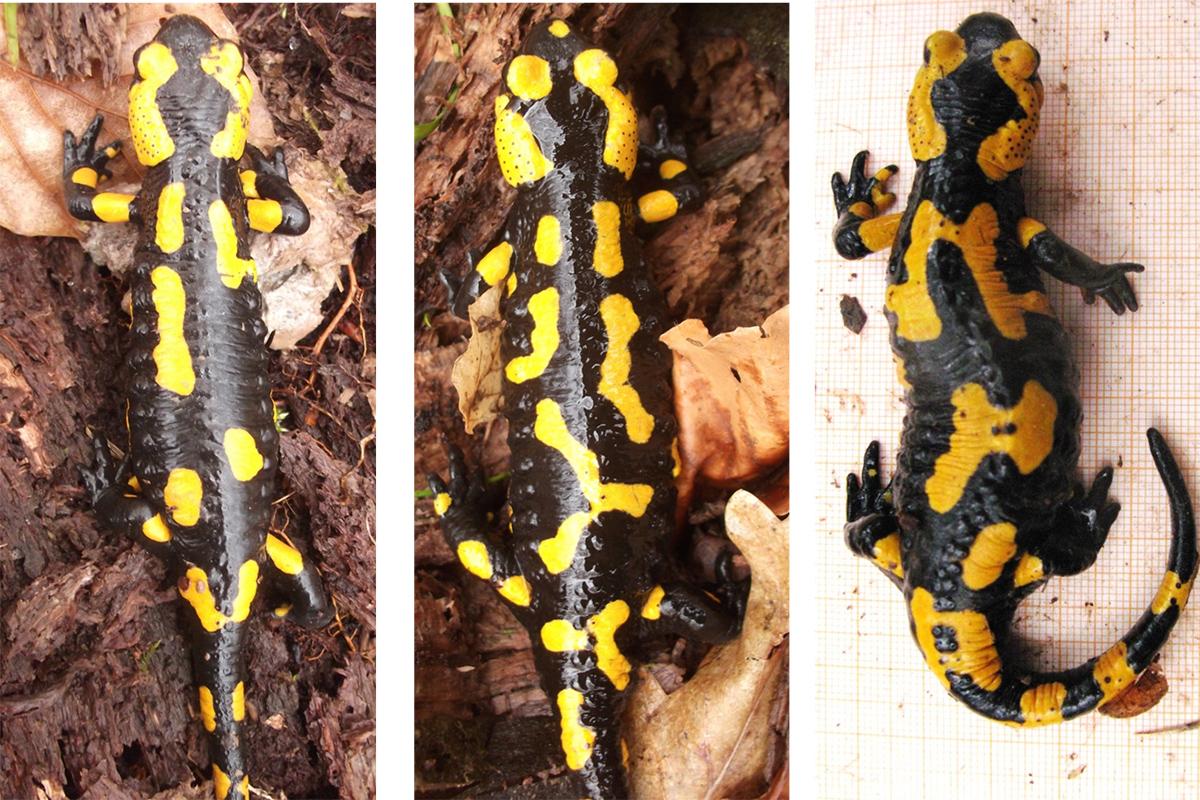In the Franconian region Steigerwald, we investigate the needs of the fire salamander (Salamandra salamandra) to its habitat with the help of forestry staff, citizen scientists, conservationists and scientists. The fire salamander is one of the most popular amphibians among our native species and we want to better understand the species in order to protect it. Thanks to his unique back pattern, we can undoubtedly recognize individual animals and, through many observations, better understand their migrations, habitat preferences or even their age. Amphibians are mostly not easy to find because their activity is weather dependent and during unfavorable conditions they hide in burrows and crevices. Additionally, they are distributed over large areas but with patchy occurrences. Therefore, one person alone can never get the amount of data necessary to answer specific questions described in the goals.
Project Goals
We want to collect long-term detailed information by the individual continuous detection of the fire salamanders, to answer questions about the age of individual animals, their migratory movements and their capability to discover and colonize new habitats. In addition, we can obtain a first overview of the distribution and the population sizes of the species in the Steigerwald.
The gained knowledge will be used to evaluate previous species-specific managment actions, e.g. the monitoring of forest and brook structures inhabited by the salamanders and the impact of coarse woody debris (deadwood) on their abundance. In cooperation with the Bavarian State Forests, we would like to find out if integrative forest management supports salamander populations, e.g. the accumulation of deadwood.
This research helps to better understand one of our largest native amphibians. We can learn more about its biology, ecology and population dynamics. We can also assess whether species specific protection programms are successful and adapt them, if necessary.
Early-warning system
The project enables us to monitor the spread of the "salamander-eating" fungus (Batrachochytrium salamandrivorans) at an early stage. This fungus has already led to the complete crash of some populations in the Benelux. It is spreading in the western part of Germany and currently represents the greatest threat to the fire salamanders and newts of Europe.
Further information can be found here.
How can I participate?
In order to support the project and the fire salamander, you only have to keep your eyes open during your walks in the Steigerwald. If you encounter a salamander, take a picture. A photo of his back drawing is sufficient. Please write down the exact location, either by GPS in your smartphone or by marking the point in a map.
Please send your photo with the date and GPS coordinates (or a map) to:
In order to prevent the spread of the salamander fungus, please apply the hygiene rules reported in a recent publication and report dead animals where the cause of death can not be identified externally.
Links for reporting Fire salamanders outside Steigerwald:
- Baden-Württemberg: Landesanstalt für Umwelt Baden-Würtemberg
- Hesse: Hessisches Landesamt für Naturschutz, Umwelt und Geologie
- Saxony: Sächsisches Landesamt für Umwelt, Landwirtschaft und Geologie
- North Rhine-Westphalia: Herpetofauna NRW
- Switzerland: www.naturschutz.ch
- Austria: Naturschutzbund
Cooperation
The project is carried out in cooperation with Bayerische Staatsforsten Betrieb Ebrach
